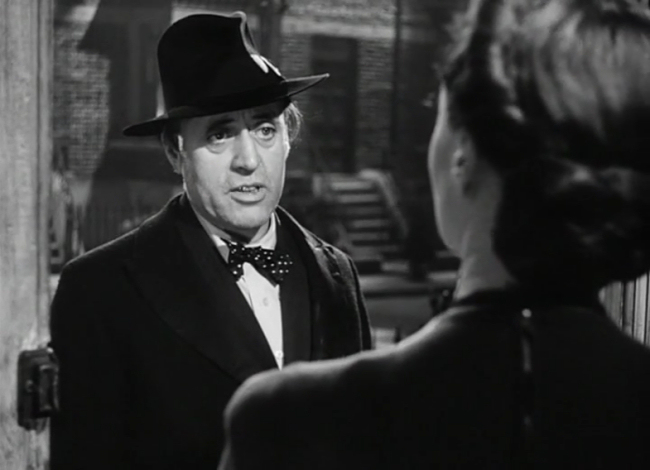
Now here's a strange hybrid; a misfit youth film noir and a comedy, and one might say a precursor to the Kitchen Sink dramas of late 1950s and early 1960s British film. 1948's London Belongs to Me imports Richard Attenborough when he was known for playing teenage hoodlums into the world of a Sidney Gilliat comedy, albeit a more humanistic one than his later screwball comedies. It's a mixture that works, united by beautiful photography and an understated gallows humour the film might have done well with indulging in more.
Attenborough's not a comedy version of his typical teen crook characters like the one in Brighton Rock. He plays Percy Boon perfectly straight and his getting caught up in double crossing a car thief has complete sincerity and sense of threat. His heart is vulnerable in two ways--he loves his bedridden mother and desperately wants to woo pretty Doris (Susan Shaw) who lives downstairs with her parents.

Everyone in the building is an important character to the story which is emphasised with the film's introduction which tracks the camera over windows from the exterior to show the different lives in each flat and introduce each character. Doris' father (Wylie Watson) has just retired from a long career and is a meek and industrious man, dominated a bit by his humourless wife (Fay Compton). There's also an older woman who's always late on rent and begging people for money and a strict but somewhat naive landlady named Kitty (Joyce Carey).
Like most good films noir the film involves a murder, which we may get a hint of when Alastair Sim shows up as Mr. Squales looking like Death itself.

He's not actually death, he's a medium, or rather a conman pretending to be one, and poor Kitty falls for him hook, line, and sinker, and soon he's living there rent free. He's also there when Percy comes home late one night and is the sole witness to something dreadful.

Like Brighton Rock or They Live by Night, the film features the 1940s conception of the troubled youth, who seems to helplessly slide from one crime to another as part of a desperate scheme to find love and acceptance. This is nicely accompanied by the vibrant rendering around him of a complex and charmingly human community of people each with their own issues--it's not unlike Shadow of a Doubt, like having an antihero in a Frank Capra movie.

The end of the film is a bit muddled and disappointing though it has an interesting courtroom scene with an argument among jurors that seems to imply Britain had no concept of manslaughter in its laws at the time. It also lacked a crucial scene at the end to show a character's reaction to an outcome of the film's love triangle--Percy, Doris, and the cop who investigates Percy's crime. In attempt to wrap things up neatly, the film creates a lot of problems, but everything that precedes the end is well worth watching.
Twitter Sonnet #811
The signs of transport came with falling stones.
An empty hand withheld the trim arrest.
Opaque adhesive pinned a pebble's bones.
Distracted courts of finches flew abreast.
A blank receipt replaced the bill at cost.
The radiance diffused upon the tide.
Alone, the crimson apple's never lost.
But ripples run through seas both strange and wide.
A whitened spring through mazes black as night
Atop the bright inspectors coughed for breath.
The sand was stuck in ancient grooves of right.
A vain invasion passed the watchful death.
Tripped ankles spring compound forage.
Impositions requisition knowledge.

No comments:
Post a Comment